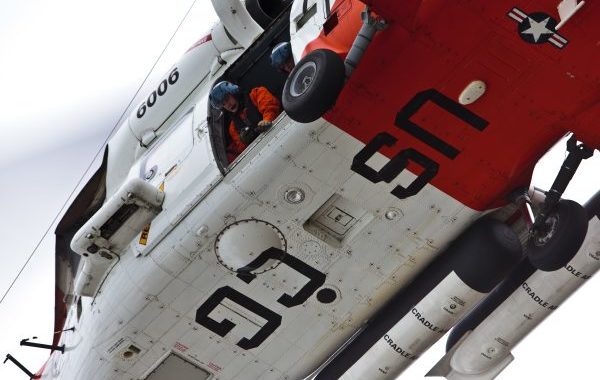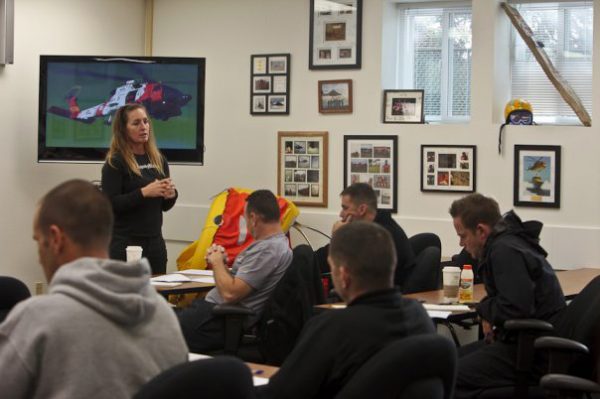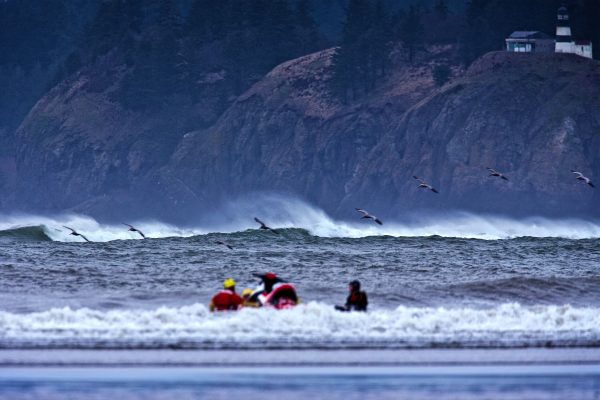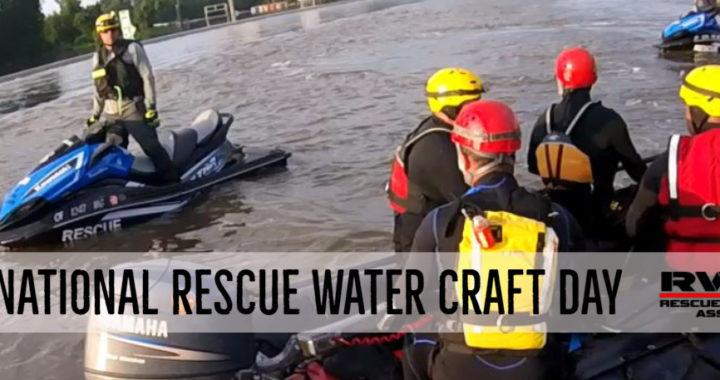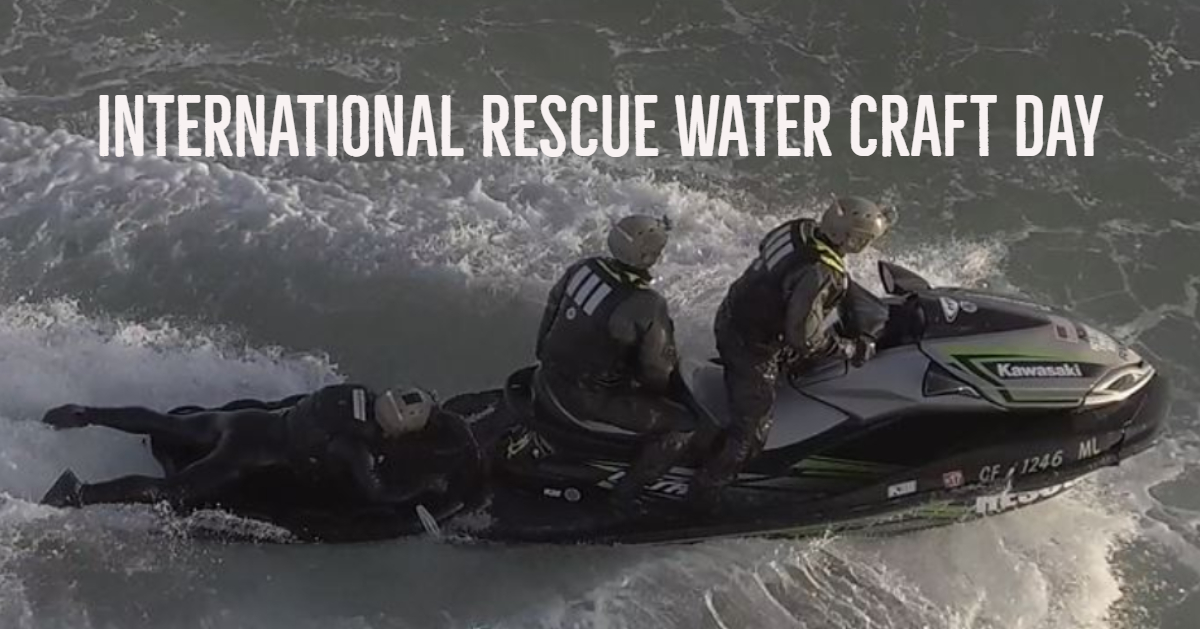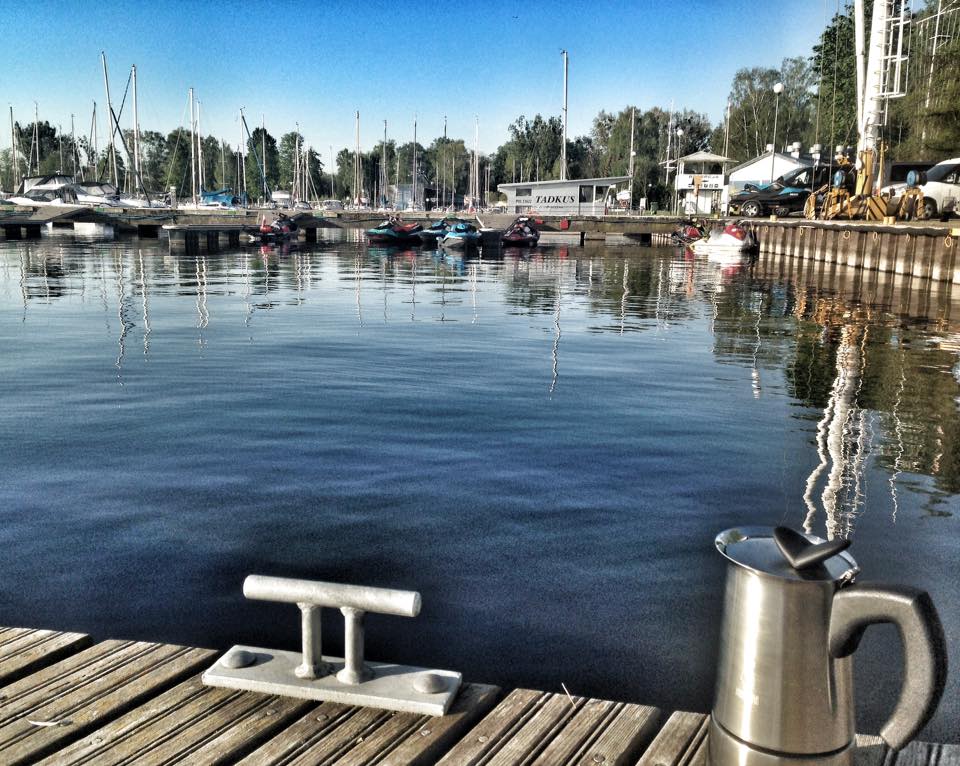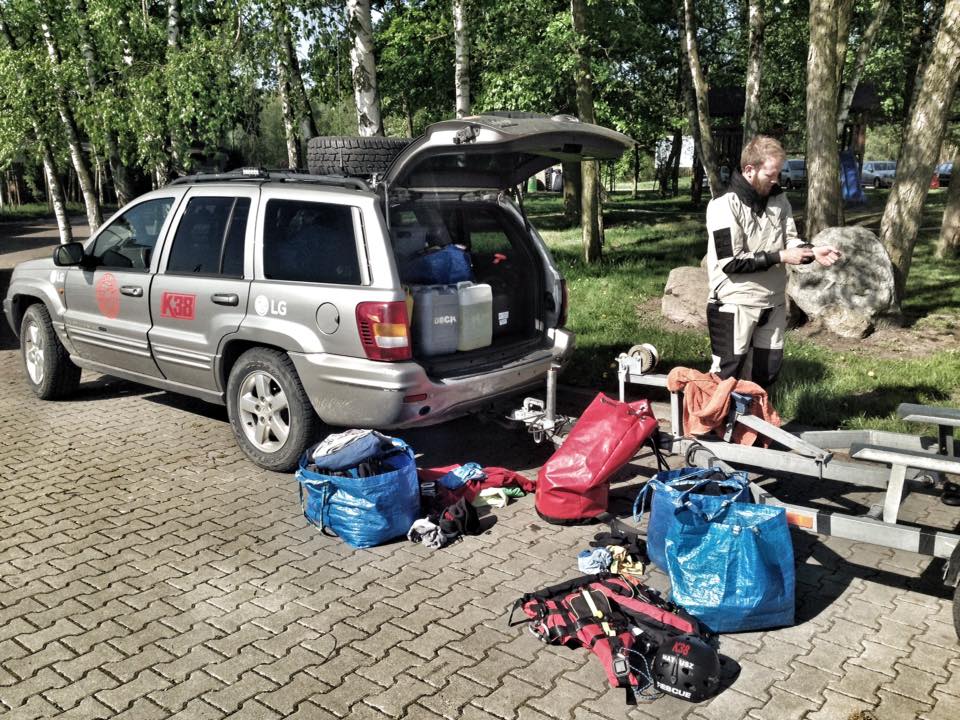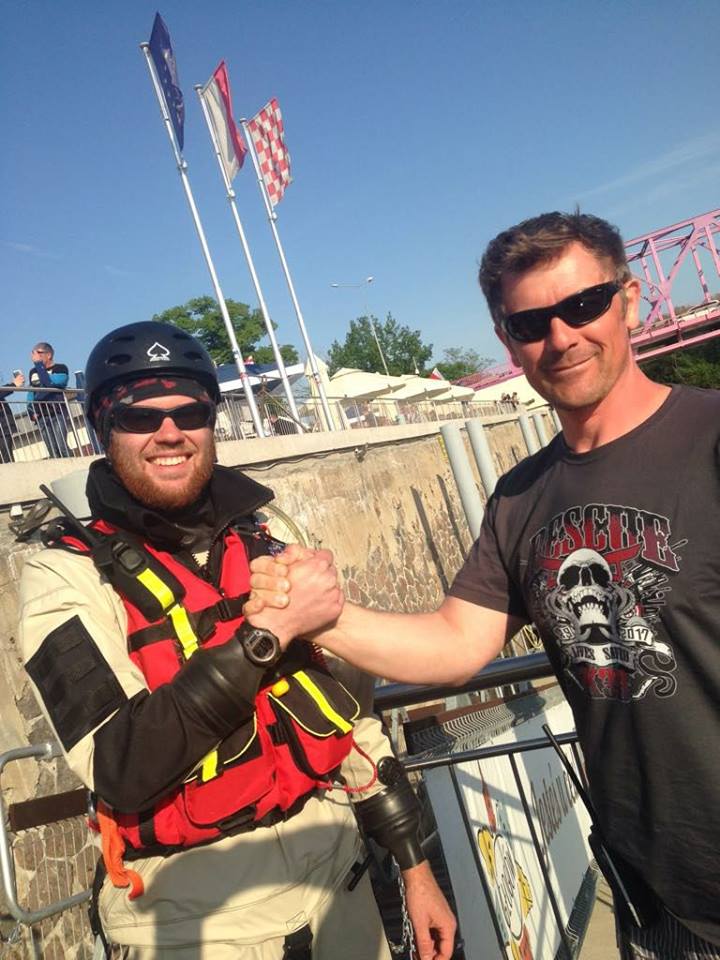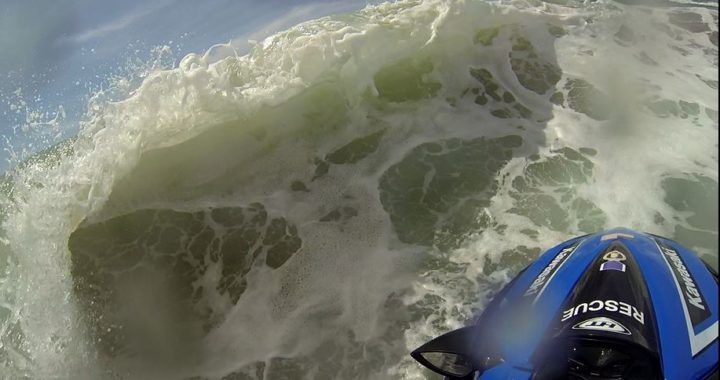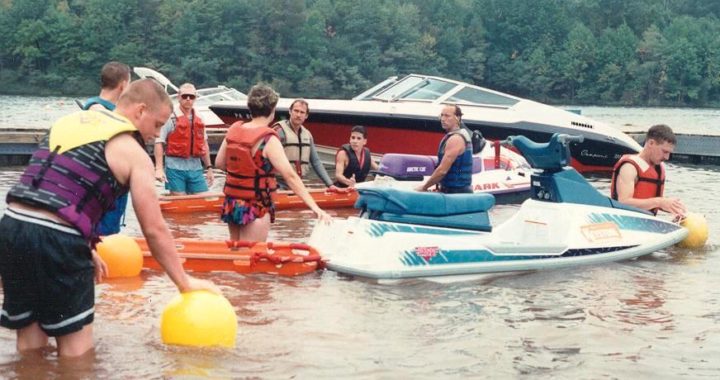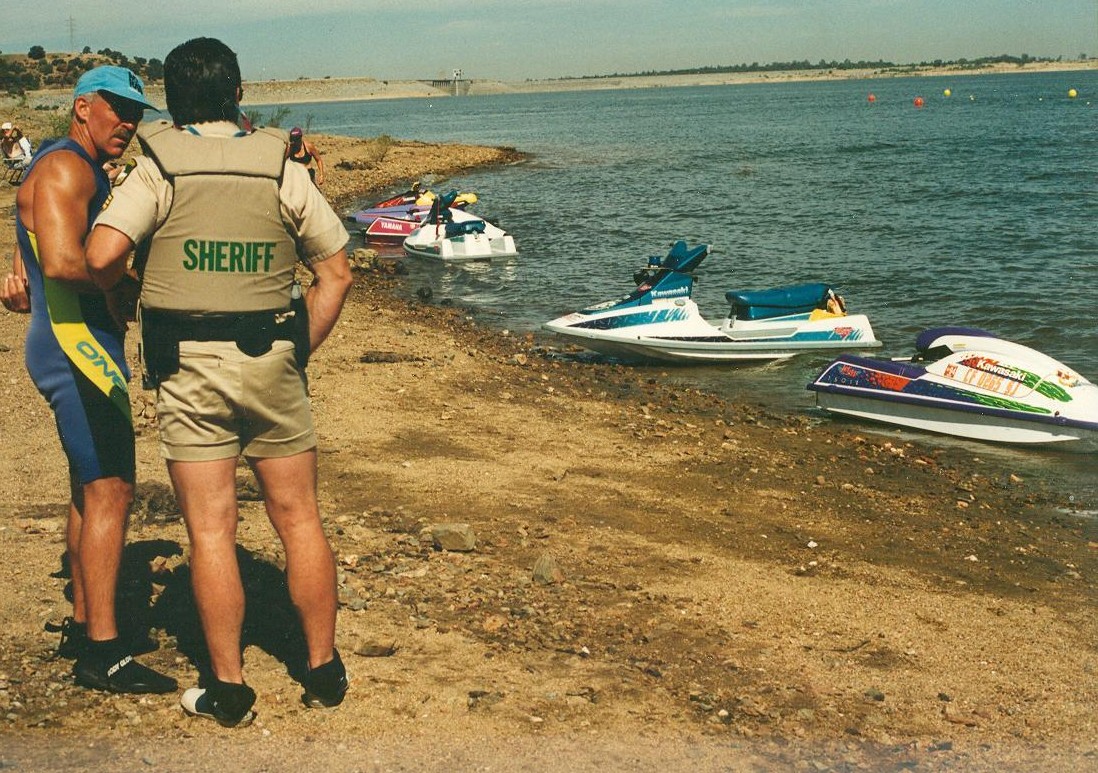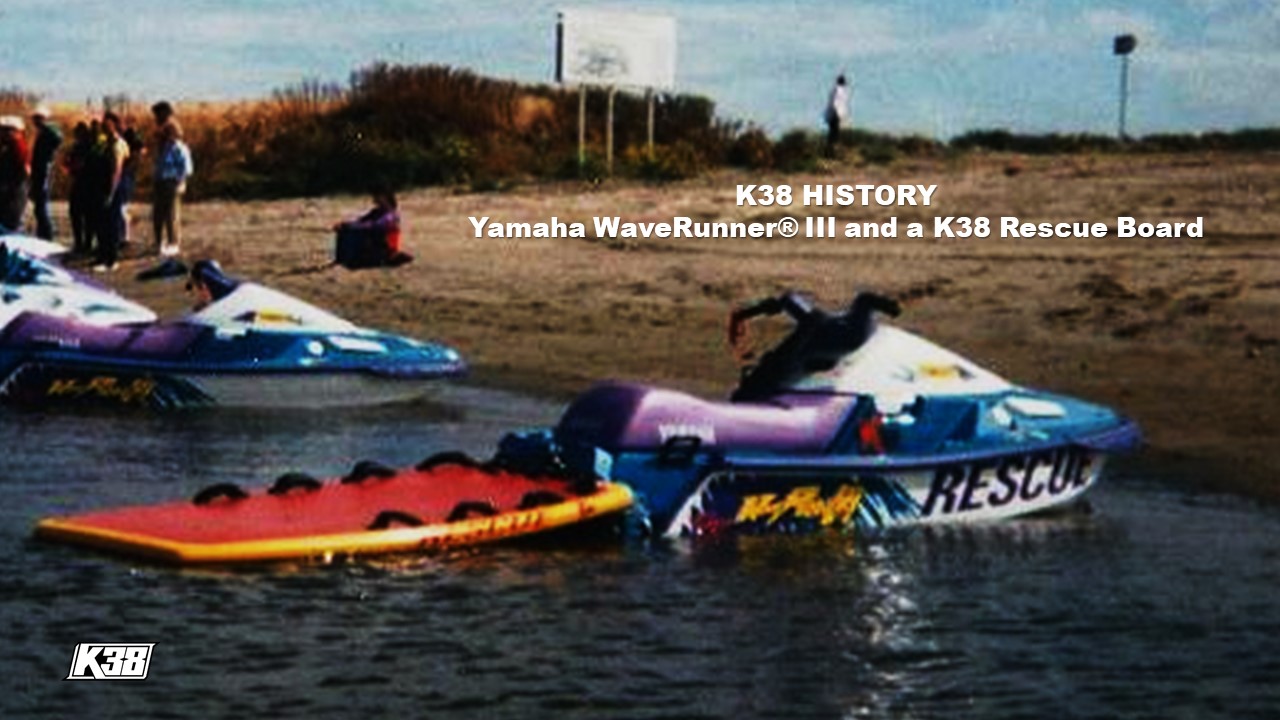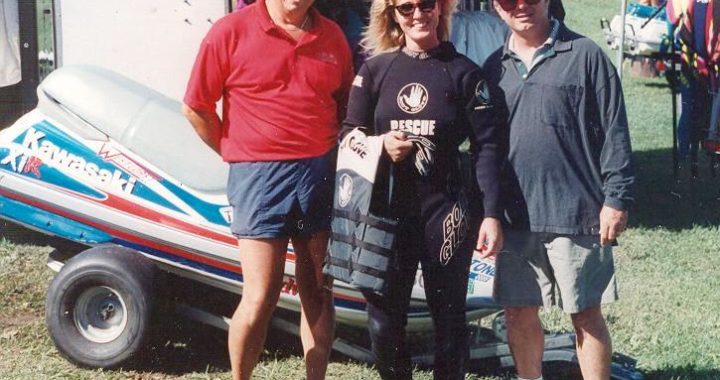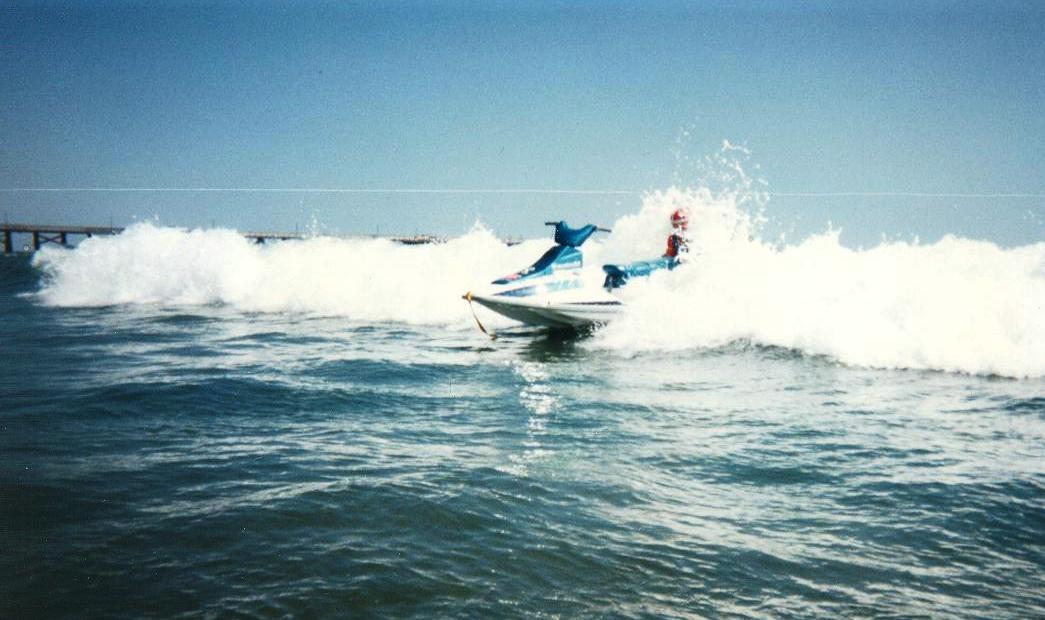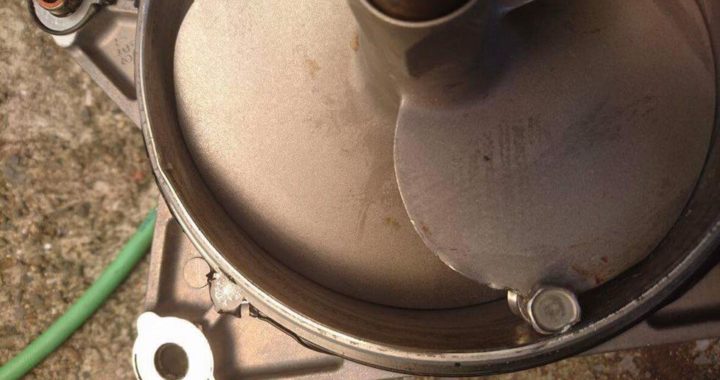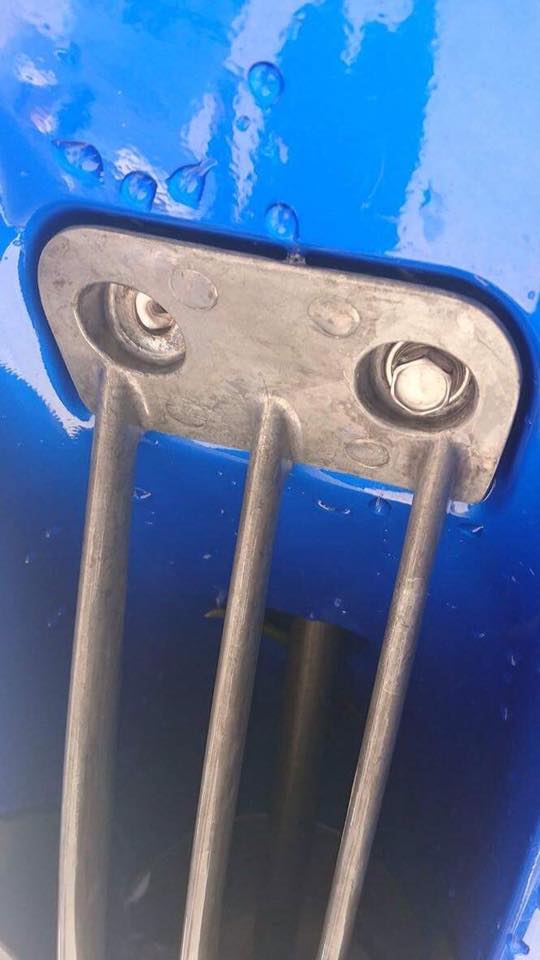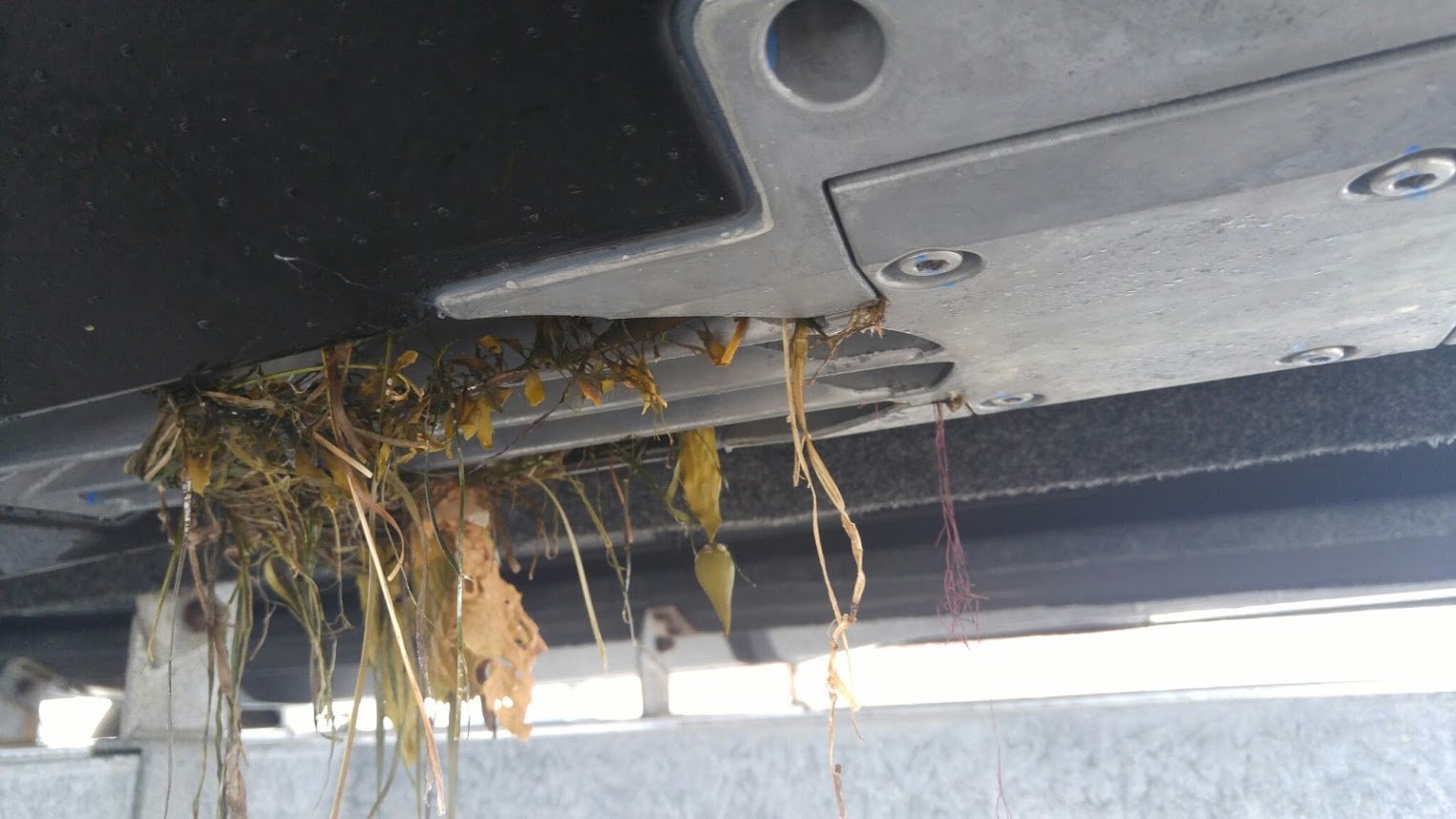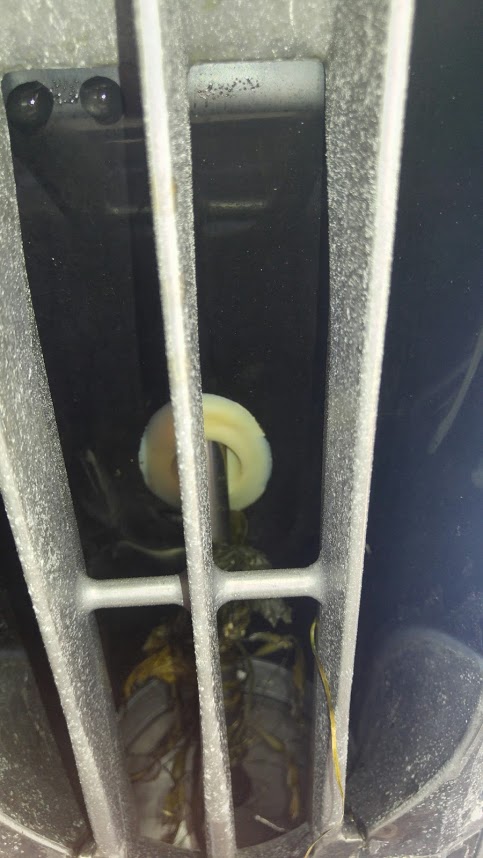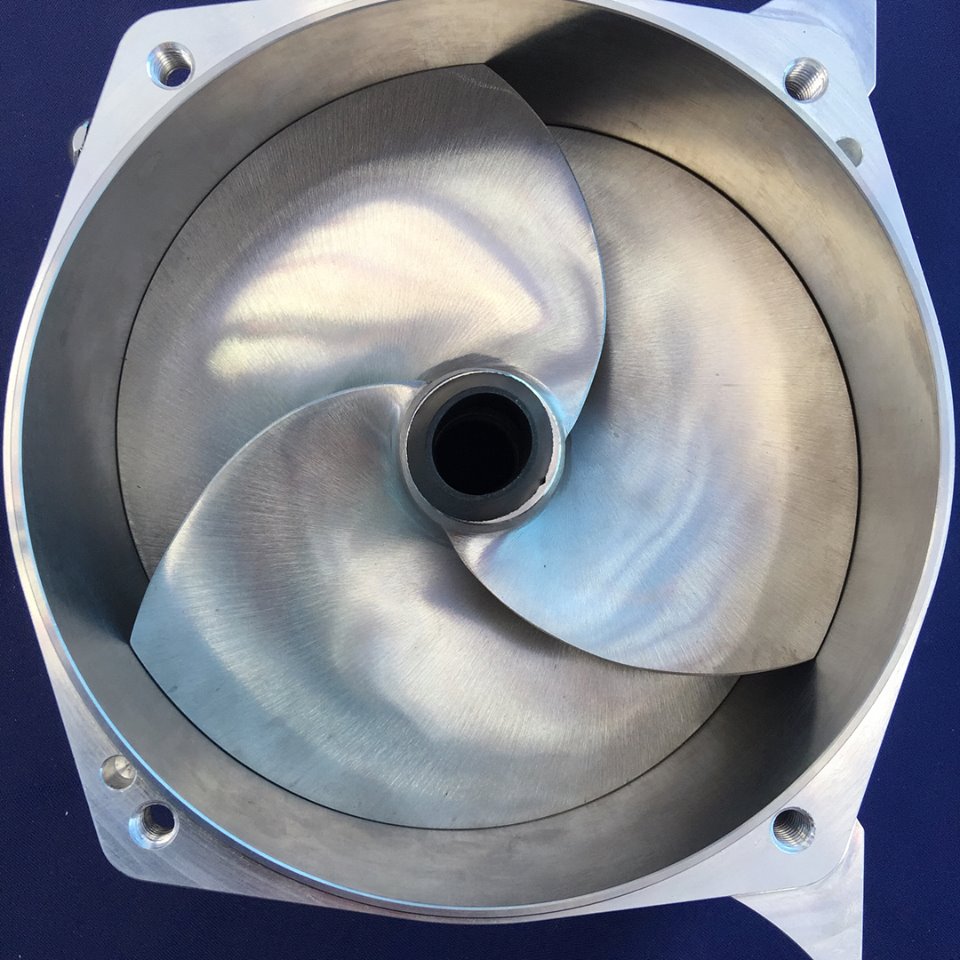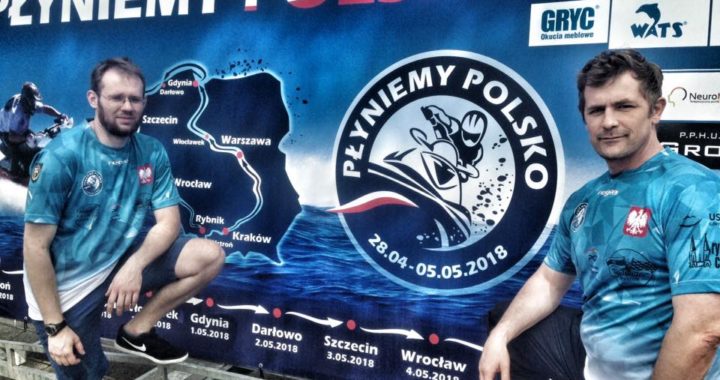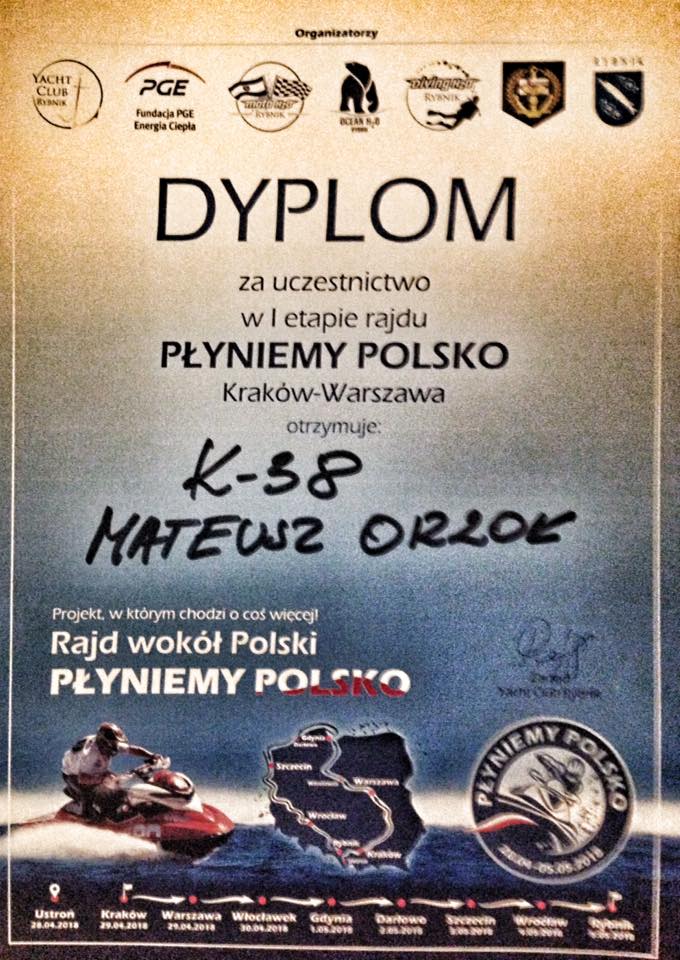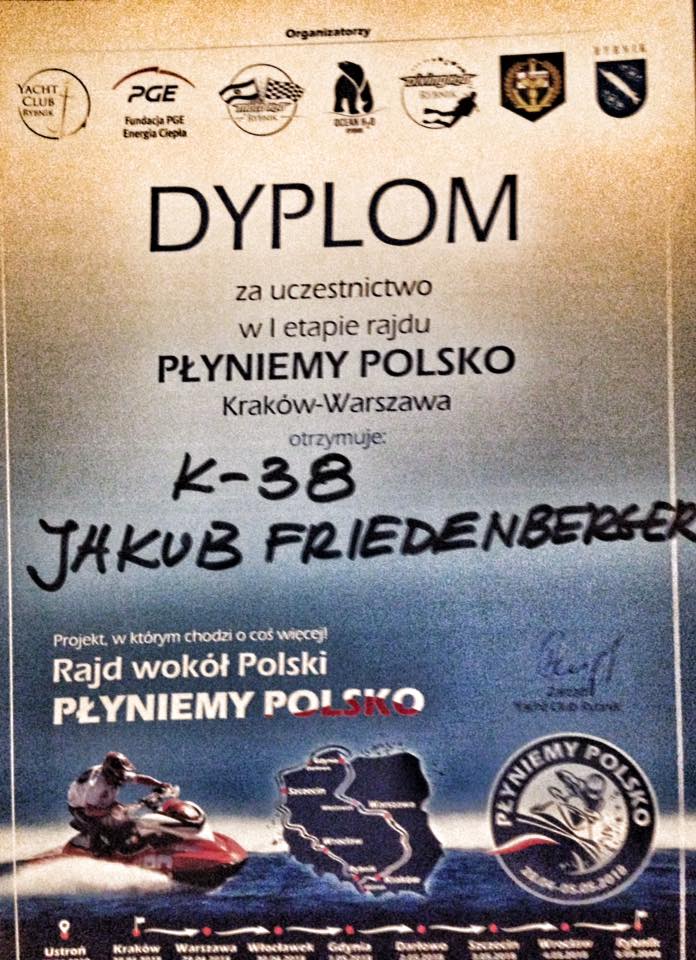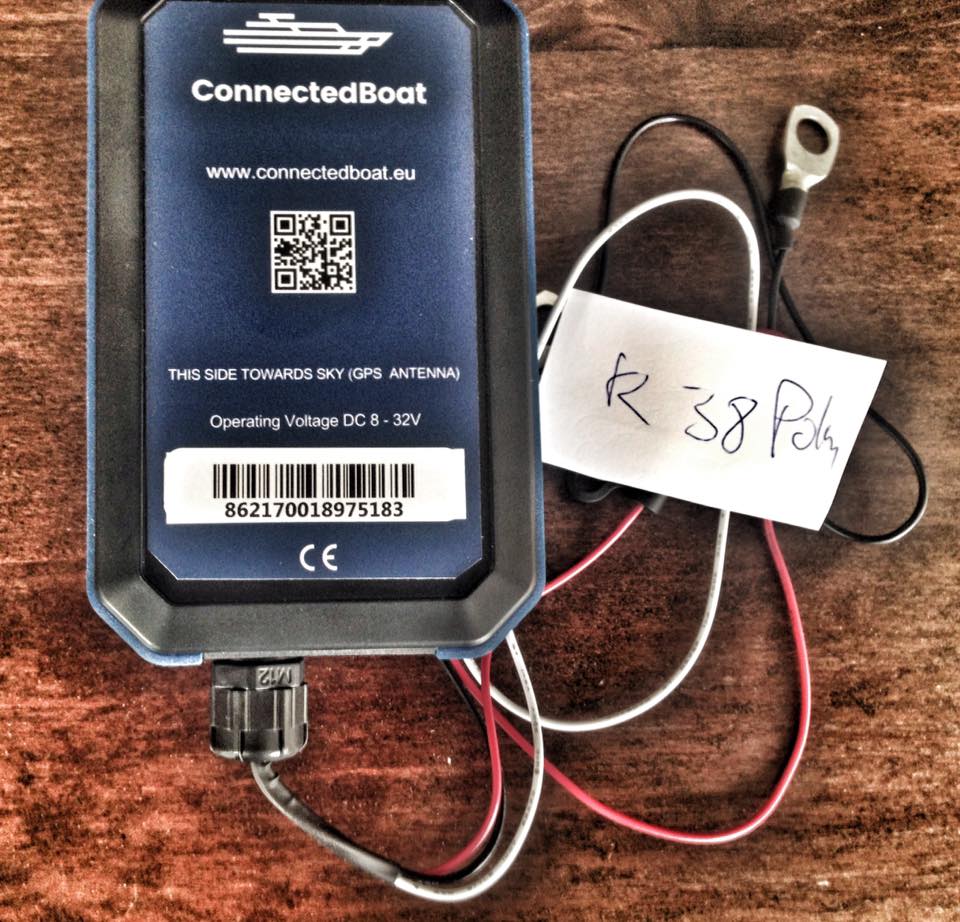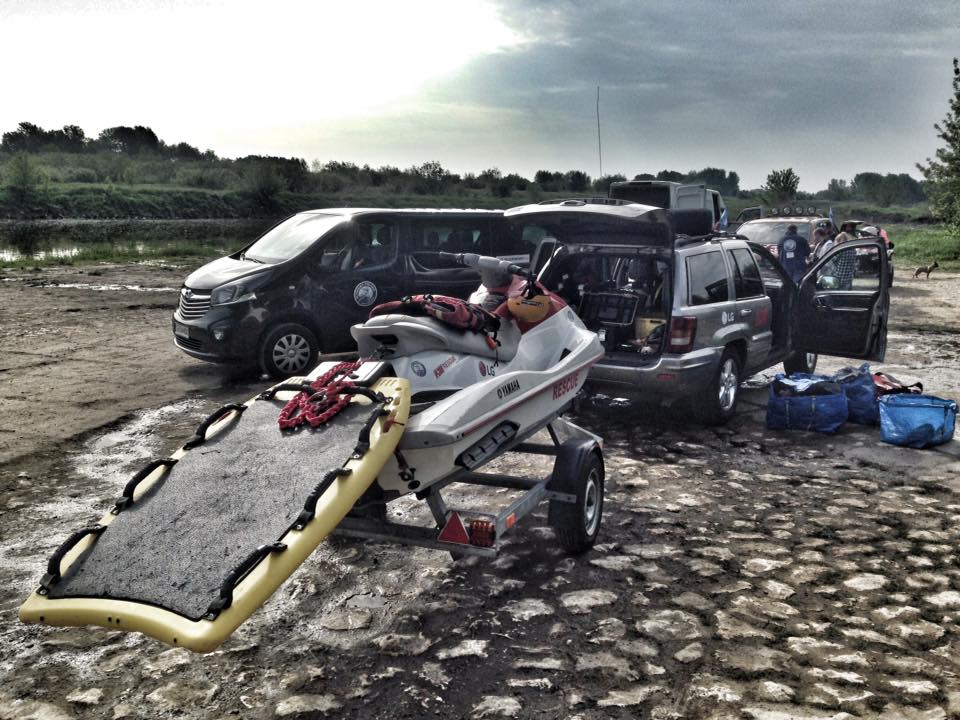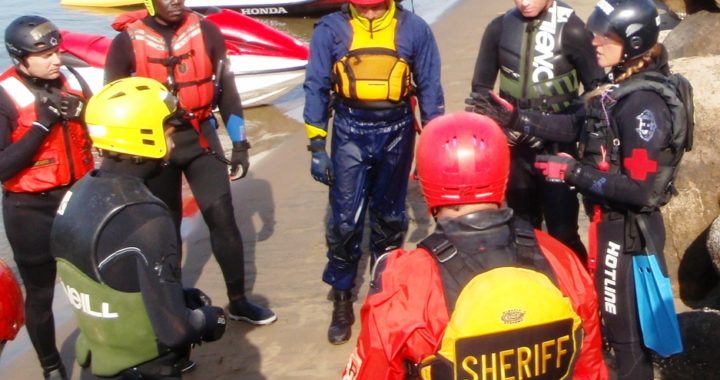Rescue Water Craft Kiteboarder Recovery
Kites, Wind, Water and You
May 21, 2018 - Just a reminder, not a formal tutorial.
Shawn Alladio
Photos: k38 Italia
Rescue Water Craft Response for Kites, some reminders and suggestions, however training is required to reduce liability at sea.
How will you use a Rescue Water Craft to recover a kiteboarder and their equipment?
Most Kite Boarders are well versed in self-rescue and the warning signs of their activity relative to others in the water. They will often use their kite as a sail and drag themselves back to shore (safety) to depower and deflate their rig. They may even be using their kite as a float an/or a sail to draw back towards shore under wind power.
Not all Rescue Water Craft operators or crew are well versed in kiteboard activity and recovery. Usually the Kiteboarding community has designated areas with high wind capacity and times of day they enjoy their sport. There are a variety of skill levels and equipment uses.
Does your agency have a policy for contact with kiteboards and their gear? Two things to consider:
- Water Based Response
- Shore Based Response
Ask yourself a few questions, are the winds light or strong and growing stronger? What is the direction of the swell, the wave height and spacing, shoreline configuration, hazards and any background or nearshore traffic?
An able bodied kiter can have their kite laying on the surface with little power, sometimes this is because the kiter has brought it down intentionally. They may have a tethered safety line they are using to recover their bar. They will loop their safety line along with handle of their bar while the other lines to the kite will have slack and it will not be able to fly.
They will continue on wrapping lines on the bar depending upon if they have 4 or 5 line bars. It is a slow process for the athlete at times. You will see the kite draw in closer and they will possibly grab onto it or lay on it and be drawn back towards shore. Determine if they are in close and okay. You may not need to intervene; observe body language. Sometimes things don’t’ work out as planned.
If you are observing a kiteboarder in the water, try to differentiate between an assist or a rescue, and possibly no response. It’s always good to conduct a safety check and maintain visual contact. For instance, they may be dragging themselves back to recover their board using the kite as a sail. There are many different behaviors of self-rescue and trouble situations kiters can get into, this is only one for reference.
Know the causes of runaway kites and potential injuries both on water and land not just to the athletes but to the responders and bystanders. There are a variety of reasons kite boarders have safety issues underway or during prep to launch or recover. Kite boarders can suffer joint and ligament, dislocations, traumatic injuries, fractures and back and neck injuries. It would be advisable to prepare for transits with these type of injuries in mind.
Kiteboarding Safety
Know the popular Kiteboard areas and observe the times they tend to launch and their behavior on your area of operation. Spend some time observing their normal body language and deployment procedures.
Visit a local supply shop and inspect the gear and become familiar with it. If you have a popular kite zone in your area, prepare in advance for those difficult situations. Sometimes you can aid a kiter who is landing on powering down the kite to bring it down. In those cases you can communicate verbally or with sign language.
Or go and talk to them, invite them to come to your agency and give a presentation; ask them questions about response in case of an emergency. Check out their kite rigs, personal protective equipment and harness set ups and how to release their kite and secure their gear.
Know the signs of a kit in distress vs a kiter just going through reset formations, there is a difference. There are a variety of injuries or suspect injuries you may encounter, so be prepared.
INDICATORS
Sunset is usually a higher risk time as thermals change with the heat/cooling effect. Out of control looping kites are a warning signal.
Remember lines can be submerged, never cross the path line of the kite location to the downed athlete with the Rescue Water Craft.
Approach the kite itself from upwind or up drift not downwind, never grab the lines. Lines can wrap, and slice under a load and it happens quickly. Once pinned you are now part of the problem.
Hopefully the kiter has unhooked from the lines first. Sometimes with an unconscious individual or severely injured this is impossible. You will need to go to a Plan B real fast. Ask the kiter if they are free of their rig. Distance of lines to note are up to 25 meters or 75’. Many variables apply, so its up to your fundamental knowledge of water, weather, kites and survivor behaviors.
If responding with a Rescue Water Craft, you must maintain craft safety as a maritime asset. This means first you protect yourself as the operator and your crew, along with your Rescue Water Craft.
You do not want the filament lines to make contact with the helm or throttle lever, let alone personal contact, and be mindful these lines will sink.
Make a quick assessment; is the kiter exhausted, are they unconscious have they suffered a traumatic injury, are they panicking? What you see is your best determination and that can change quickly.
Make sure you have a minimum of 2 tourniquets on board your Rescue Water Craft. Our operational standard is 4 and we have them stowed inside a waterproof Pelican case.
At idle speed driving over lines you can consider the threat level of fouling your impeller to be ‘danger high’. So don’t do that.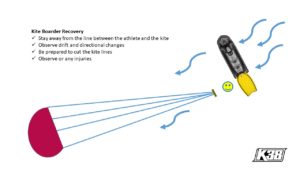
Rescue Water Craft Approach
This is no easy task, consider the type of RWC you are using and your idle speed and athlete condition.
You may need to shut the Rescue Water Craft off and float/drag in the water alongside the athlete until a full recovery is made. Be mindful of which position your bow is in and subsequent threats under time and direction.
Stay clear of all filament lines regardless and do not grab the bar. Make sure you have your cutter ready with you in cases of an emergency.
If you are responding to a situation with a looping kite this one is tricky. It’s called the ‘death loop’. If you can make contact and deflate the kite that would be advantageous if a serious situation occurs. Remember two kites that are tangled, the athletes have no way to control the depowering of a kite. You will see a spinning kite in these situations most likely.
Keep in mind with wind direction, velocity and athlete positioning they can get dragged and seriously harmed and you don’t want to become a part of that problem. Stay clear of the line of sight and line of drift, and think ahead!
Kites can impact others in the water such as swimmers, surfers or bodyboarding. They can run alongside piers or jetty walls or if offshore winds persist run away at sea. On land they can be menacing and deadly.
If nearshore grab the kite at the center bridge, along the leading inflatable edge if it makes it to land you may have to flip it upside down. Once again pull it downward rapidly and walk towards the tension of the lines against the athlete (if still tethered) and drag down to get the lift away from the inflatable bridge/sail.
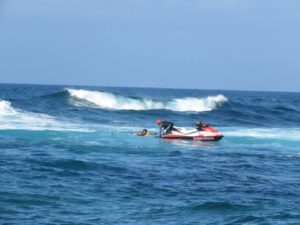
MONITOR the Kite
Remember once a kite makes landfall there is a strong possibility depending upon wind conditions that the kite will pick up speed, you must act quickly and know what to do.
You need to know how to release the kite from an athletes harness at their midsection. This can be very difficult with an unconscious survivor. Typically you are looking for a red knobs to pull as a release (or cut the lines). Make sure the lines are not under tension and that you are both facing a positive direction relative to the wind.
Again be mindful of lines and their direct position to you, the Rescue Water Craft and the athlete. You may need to have several cutters as at this point. If you don’t have a safety tether attached to the cutter it’s possible to lose one overboard. Be mindful at this point of contact your own engine cut off switch. Secure it safely inside the chest opening of your lifejacket if you power off the Rescue Water Craft.
Approaches to the kite are best measured by contact with the leading edge of the inflatable bridge windward at approximately a 45 degree angle. Do you best to avoid the lines and keep a steady observation on the water and wind conditions surrounding the threat and athlete location.
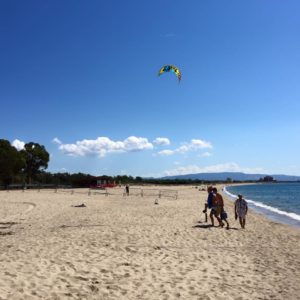
MEDIATION
Immediately deflate the kite by identifying the location of the plugs. Then in a lengthwise direction roll the kite and wind the filament lines onto the bar itself. Then return to the kiter location and assist in their recovery. Remember once again lines can wrap or snap or have already done this to the athlete.
Be mindful if you are heading towards shore or out to sea. Keep a watch regarding nearshore rip currents. Keep in mind that the kitesurfer may be pulling their lines in. Consider how much drift you will have from point of contact to boarding the kitesurfer and possibly their kit on your Rescue Water Craft.
Ensure you are mindful of when to power off the Rescue Water Craft. Ensure you have secured all the threat hazards. I like to use a 4 foot runner with a carabiner to put a fast lock loop around kite gear to help me with mobility and stowage. I usually have redundancy of these assets. These are to be considered to be disposable accessory devices. Make sure you have replacements readily available.
When you get underway you do not want to ‘wash away’ the kite gear. You can do this one qualified Operator of a Stage 5 category or a Stage 5 category crew. Secure the kite board, athlete. Do not operate above 25 mph under transit. Slow is Pro at point of contact!
At sea you will be setting the kite adrift (or it already is), so there is that secondary hazard for others and don't forget the length distance from athlete to kite.
There are a variety of quick releases usually marked red but not always.
Landing a kite: grab again at center bridge, make sure the inflatable bridge is lowered to the ground with skirts up and throw some sand on the flaps to weight it down probably 20-30 lbs. of weight.
Pull the inflator hoses, deflation valve or plug to depower the rig on land and stow it, watch out for those lines again.
You should all undertake specific training with these kind of rigs, watch those lines and be mindful of your water jet pump.
Upwind or Downwind

RECAP
Not a training aid, please refer to qualified certification programs and visit a Kiteboarding club or shop for further details and important information.
- Approach the athlete with the kite in front of them and the wind to your back on a 45 degree angle, or conduct a Johnny B Maneuver. (Draw an imaginary J with the bow of your craft to your point of contact either port or starboard side)
- Contact with the kite is best done at the center inflated bridge, hold on tight while maintaining your balance on the Rescue Water Craft and do not let go. Keep in mind the rotational forces of your Rescue Water Craft and any windage against both the hull and the kite itself.
- Approach the kite downwind at a 45 degree angle, you can also position and let it drift towards your line of direction and make contact broadside. Keep in mind you may be making contact on port or starboard side so refer to your best practices and operational functionality.
- Once you make contact with the kite and have the rig secured you can complete a full circle rotation keeping the lines to your inside turn so you don’t cross over them and bring the kite back to the athlete. They may be able to get underway again if the rig is okay and they have no injuries or exhaustion, talk to them and ask them how they are doing, visible signs of injury or panic take to shore
- (Situation Option) Or the kite must be deflated and the athlete may have already have packed down, or the kite could be drawing free in the direction of the wind. Often a kite boarder will use their harness to wrap a deflated kite into a bungle for transport. Kites can be lethal if unsecured so keep it low to the water/ground and deflate.
- Your ending is the most important part, slow steady stable transport and a calm ending for transfer to shore, keep your bow out to oncoming wave energy or your bow towards shore in large bodies of water.
- Power down your Rescue Water Craft once you are in 2.5 feet of water
Reference Video:
https://www.youtube.com/watch?v=hOjMA9a0rSc
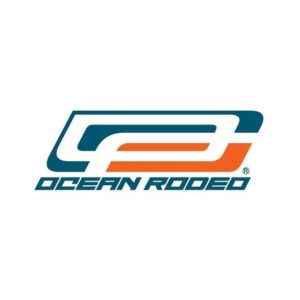
WE RECOMMEND OCEAN RODEO DRYSUITS
Check them out for drysuit comfort and safety underway. This is an outstanding company that has a pedigree in kiteboarding.
Photos: K38 Italia
Content Creator - Shawn Alladio cares most about her community and the culture surrounding the safety of event service providers and Rescue Water Craft operators, working hard and dedicated towards protecting their reputation, distributing safety information and continuing to train these amazing individuals to the highest standards of care.
